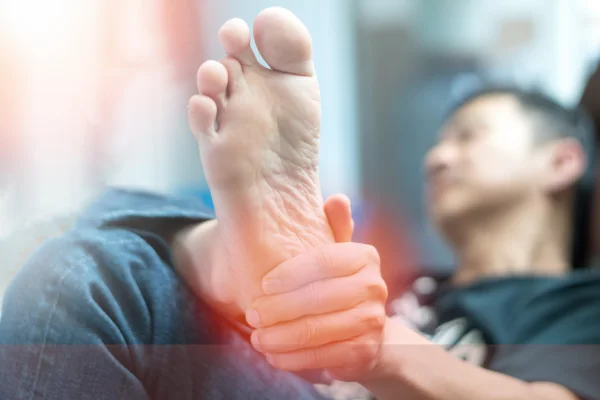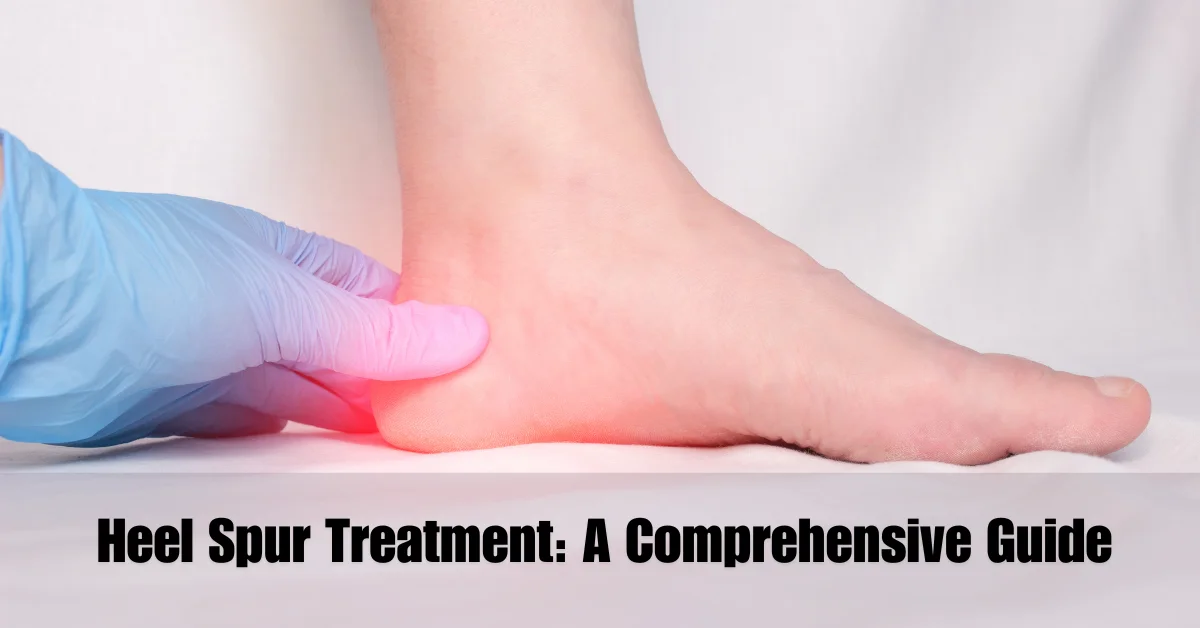Heel spurs can be a real pain, quite literally! But don’t worry; we’re here to help you understand what they are, how they form, and, most importantly, how to treat them. This guide will take you through everything you need to know about heel spurs, using simple language and relatable examples.
Heel spurs are small, bony growths that develop on the underside of the heel bone. They can be uncomfortable and, at times, quite painful. Imagine a tiny pebble stuck in your shoe, irritating with every step—this is similar to what a heel spur feels like. In this article, we’ll explore what causes heel spurs, the symptoms to look out for, and the various treatment options available. Let’s dive in and find out how to keep your feet happy and healthy!
What Is a Heel Spur?

A heel spur is a calcium deposit causing a bony protrusion on the underside of the heel bone. It is often associated with plantar fasciitis, a condition characterized by inflammation of the plantar fascia—a thick band of tissue that runs across the bottom of your foot. The spur itself isn’t always painful, but it can contribute to discomfort when it irritates surrounding tissues.
Causes of Heel Spurs
Heel spurs develop over time due to repeated stress and strain on the foot. Some common causes include:
- Excessive Walking or Running: High-impact activities can put a lot of pressure on the heel, leading to spur formation.
- Improper Footwear: Shoes lacking proper arch support can strain the plantar fascia.
- Obesity: Extra weight increases pressure on the feet.
- Age: As we age, the plantar fascia can become less flexible, increasing the risk of heel spurs.
Symptoms of Heel Spurs
Heel spurs themselves might not cause symptoms. However, if they irritate surrounding tissues, you may experience:
- Sharp Pain: Especially noticeable when standing up after resting.
- Dull Ache: A constant, mild pain in the heel.
- Swelling and Inflammation: Around the affected area.
Diagnosis
Diagnosing a heel spur involves a combination of medical history review and physical examination. Your doctor may:
- Ask About Symptoms: To understand the nature and duration of your pain.
- Conduct a Physical Exam: To check for tenderness, swelling, and range of motion.
- X-rays: To confirm the presence of a spur and assess its size and location.
Conservative Treatment Options
Many cases of heel spurs can be managed with conservative treatments, which include:
- Rest: Giving your foot time to heal by avoiding strenuous activities.
- Ice Therapy: Applying ice packs to reduce inflammation and pain.
- Pain Relievers: Over-the-counter medications like ibuprofen can help manage discomfort.
- Orthotic Devices: Shoe inserts that provide arch support and cushion the heel.
Home Remedies
Several home remedies can provide relief from heel spur pain:
- Stretching Exercises: Gently stretching the calf muscles and plantar fascia can alleviate tension.
- Massage: Massaging the affected area with warm oil can soothe pain.
- Proper Footwear: Wearing shoes with good arch support and cushioning can prevent further irritation.
Medical Treatments
If conservative methods don’t work, you may need to consider medical treatments, such as:
- Corticosteroid Injections: To reduce inflammation and pain.
- Physical Therapy: Strengthening and stretching exercises guided by a therapist.
- Night Splints: Worn while sleeping to stretch the plantar fascia and Achilles tendon.
Surgical Options
Surgery is rarely necessary but may be considered if other treatments fail. Surgical options include:
- Plantar Fascia Release: Cutting part of the plantar fascia to relieve tension.
- Heel Spur Removal: Surgically removing the spur.
Preventing Heel Spurs
Prevention is better than cure! To prevent heel spurs, consider the following:
- Maintain a Healthy Weight: Reducing stress on your feet.
- Wear Supportive Shoes: Especially during physical activities.
- Warm Up Properly: Before exercising to prevent strain.
Lifestyle Changes
Making simple lifestyle changes can significantly reduce your risk of developing heel spurs:
- Incorporate Low-Impact Activities: Such as swimming or cycling into your routine.
- Stretch Regularly: To keep your muscles and tendons flexible.
- Avoid Walking Barefoot: Especially on hard surfaces.
Footwear Considerations
Choosing the right footwear is crucial. Look for:
- Arch Support: To prevent excessive strain on the plantar fascia.
- Cushioning: To absorb shock and reduce pressure on the heel.
- Proper Fit: Ensure your shoes are not too tight or too loose.
Exercises and Stretches
Incorporate these exercises and stretches into your routine:
- Calf Stretches: Stand facing a wall, place one foot behind the other, and lean forward.
- Towel Stretch: Sit with your legs extended, loop a towel around your foot, and gently pull.
Myths About Heel Spurs
There are several myths about heel spurs, such as:
- Myth: Only athletes get heel spurs.
- Fact: Anyone can develop them, regardless of activity level.
- Myth: Surgery is the only solution.
- Fact: Many cases are resolved with conservative treatments.
Conclusion
Heel spurs can be a nuisance, but with the right knowledge and treatment, they are manageable. By understanding the causes, symptoms, and treatments, you can take proactive steps to prevent and alleviate pain. Remember, your feet carry you through life, so take good care of them!
FAQs
Q1: What Causes Heel Spurs To Develop?
Heel spurs form due to repeated stress on the heel bone, often associated with conditions like plantar fasciitis. Factors such as excessive walking, improper footwear, and obesity can contribute to their development.
Q2: Can Heel Spurs Go Away On Their Own?
Heel spurs don’t typically disappear, but the pain can subside with proper treatment and care. Conservative methods like rest, ice, and orthotics can help manage symptoms.
Q3: How Can I Prevent Heel Spurs?
Prevent heel spurs by maintaining a healthy weight, wearing supportive shoes, warming up before exercise, and incorporating low-impact activities into your routine.
Q4: When Should I See A Doctor For Heel Pain?
See a doctor if your heel pain persists despite home treatment, if it’s severe, or if it interferes with your daily activities.
Q5: Is Surgery The Only Option For Treating Heel Spurs?
No, surgery is usually a last resort. Most heel spurs can be managed with conservative treatments like rest, physical therapy, and proper footwear.

